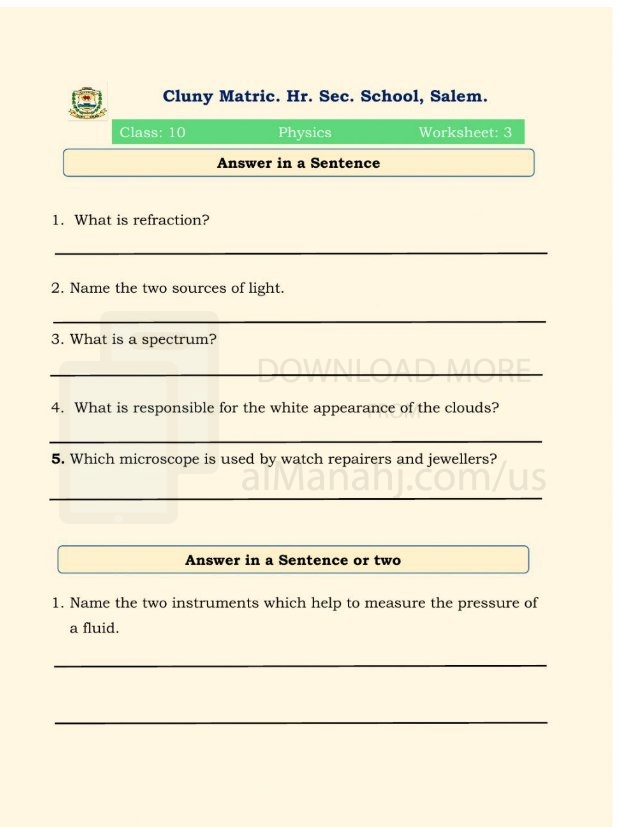| You are here: Almanahj Website ⇒ American curriculum ⇒ 10th Grade ⇒ Physics ⇒ Term 1 | ||
|---|---|---|
Worksheet about physics measurement | ||
|---|---|---|
| Subject: Physics | ||
| 10th Grade | ||
| Term 1 | ||
| Year: 2023/2024 | ||
| Size: 198.8KB | ||
| Number of clicks: 90 | ||
| Publish date:November 07, 2023 | ||
| Added by: Eman | ||
| Last download date: 2024-08-29 16:26:01 | ||
| Updated by: Eman9966 on 2023-11-07 13:24:11 | By: theodor Clunysalem1 | |
| File info: Physics measurement is a fundamental aspect of the scientific study of the physical world. It involves the quantification of various physical quantities using standardized units and precise techniques. Here's a description of physics measurement: 1. Physical Quantities: In physics, physical quantities are properties or attributes of objects or phenomena that can be measured. Examples of physical quantities include length, mass, time, temperature, velocity, acceleration, force, energy, and electric charge. These quantities are essential for describing and understanding the behavior of objects and the interactions between them. 2. Standard Units: To ensure consistency and comparability in measurements, standard units are used. The International System of Units (SI) is the globally accepted system of measurement in physics. It provides a set of standard units for different physical quantities. For example, the meter (m) is the SI unit for length, the kilogram (kg) for mass, the second (s) for time, and so on. Standard units allow scientists to communicate and exchange measurements accurately. 3. Measurement Process: The measurement process involves determining the value of a physical quantity using appropriate instruments and techniques. It typically consists of the following steps: - Selection of a suitable measuring instrument: Depending on the physical quantity being measured, specific instruments such as rulers, balances, thermometers, clocks, or various specialized devices may be used. - Calibration: Before making measurements, instruments need to be calibrated to ensure their accuracy. Calibration involves comparing the instrument's readings to known standards and adjusting them if necessary. - Taking measurements: Measurements are made by reading the instrument and recording the value. It's crucial to minimize uncertainties and errors in measurements by following proper techniques and considering factors such as zero errors, parallax, and environmental conditions. - Data analysis: After obtaining measurements, data analysis techniques are used to process and interpret the results. This may involve calculations, statistical analysis, and graphical representations to extract meaningful information and draw conclusions. 4. Precision and Accuracy: In physics measurement, precision and accuracy are important concepts. Precision refers to the level of exactness or reproducibility of measurements. A precise measurement exhibits a small amount of random error, with repeated measurements closely clustered together. Accuracy, on the other hand, refers to how close a measured value is to the true or accepted value. An accurate measurement has a small systematic error, which is the difference between the measured value and the true value. 5. Significant Figures: Significant figures are used to express the precision of a measurement. They represent the reliable digits in a measured value, including all certain digits and the first uncertain digit. Significant figures help convey the precision of a measurement and ensure that calculated results are not expressed with more precision than the original measurements. Physics measurement plays a crucial role in the development and testing of scientific theories and models. Accurate and precise measurements provide the foundation for understanding natural phenomena, verifying theoretical predictions, and advancing scientific knowledge. | ||
| Downloading link Worksheet about physics measurement |
|---|
|
1699360517.pdf
The file is being prepared for download
|
| File images |
|---|
 |